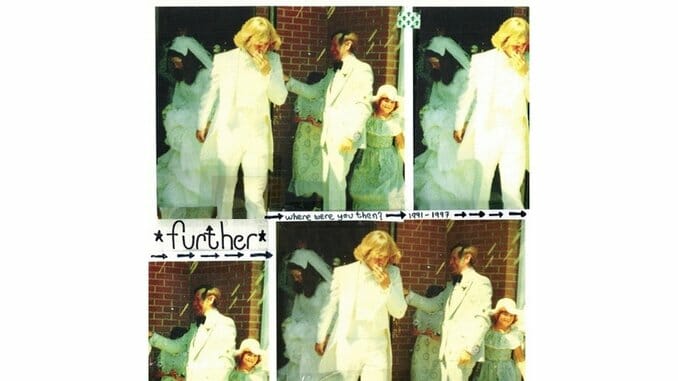Further: Where Were You Then

Further didn’t get enough respect in its day. Indie rock in the ‘90s was hung up on authenticity and credibility, and Further was largely treated like it had neither. They weren’t on a “cool” label (although Creation did license their debut for the UK) and the key members, Brent and Darren Rademaker, had been in a band called Shadowland that was signed to Geffen. Back then it was one thing to get big in the indies and then sign to a major as Sonic Youth and Husker Du had done; bombing on a major with some REM-style college rock and then reformulating as indie rockers made you look like trendhoppers, at least to early ‘90s teens who cared way too much about this shit. There’s a reason teens don’t run the world. Teens are dumb.
The new compilation Where Were You Then highlights 13 Further songs, and the title could be seen as either a play on nostalgia or a pointed challenge to the indie rock fans who didn’t fully support the band 20 years ago. It’s a fine overview of a solid career of noisy, ramshackle pop-rock jive, and probably enough Further for any interested party. Listening in retrospect, it might make you wonder why they weren’t bigger, but you’re probably not going to think the lack of minor league success for this particular material was any kind of grave injustice.
I liked Further at the time. They weren’t one of my absolute favorite bands, but I had a couple of their early albums in high school. I couldn’t get most of my friends on board, though. It was easy to write early Further off as a blatant Dinosaur Jr clone, with noise-saturated, solo-filled rock and vocals that sounded almost exactly like J. Mascis. If you slipped Where Were You Then’s second song, “Over & Out,” on Bug and played it for somebody who’d never listened to Dinosaur before, they probably couldn’t even tell a difference.
-

-

-

-

-

-

-

-

-

-

-

-

-

-

-

-

-

-

-

-

-

-

-

-

-

-

-

-

-

-

-

-

-

-

-

-

-

-

-

-








































